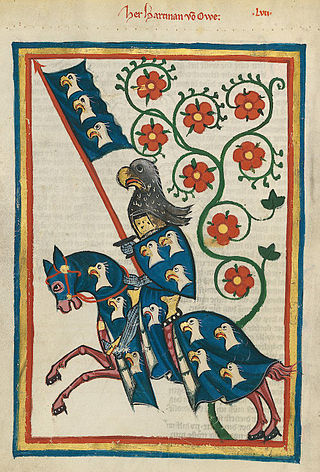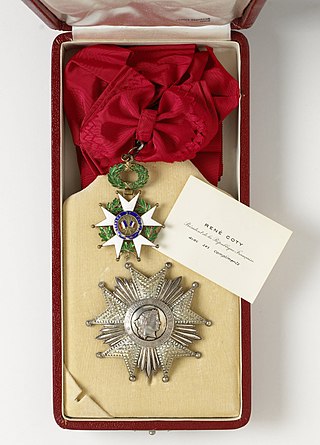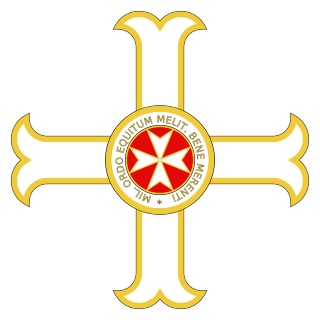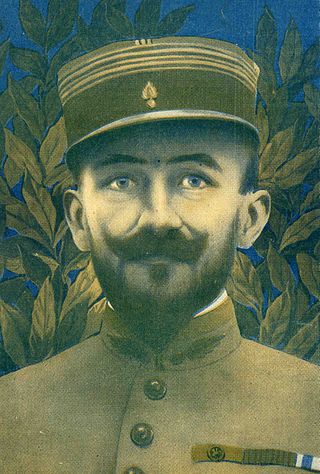Sources
- Gustav Adolph Ackermann, Ordensbuch, Sämtlicher in Europa blühender und erloschener Orden und Ehrenzeichen. Annaberg, 1855 - Google Books (Former orders of France : p. 205-214)
This page is a list of the orders of chivalry and orders of merit awarded by France, in the order they were established or incorporated in France, and their origins.
On January 1, 1791, the Order of Saint Louis and the Order of Military Merit were merged into the Military Decoration (French: Décoration militaire) by the Convention, the revolutionary parliament.
Revolutionary France abolished all chivalric orders of the monarchy in 1793. There were nevertheless decorations such as medals and Weapons of Honour.
The French Republic possessed in Asia, Africa and America a large colonial empire. For the purposes of this huge area, a number of "Colonial orders of knighthood" were established or incorporated.
They were :
In addition, the Governor-General of French Indo-China established in 1900 :
France had also not enough in the fatherland with the Legion of Honor. The various ministries therefore proposed that they themselves managed and issued orders to:
In 1940, a French government was formed in exile . They suggested a knighthood order as:
The France-remaining government of Marshal Philippe Pétain, the so-called "Vichy government", proposed 2 knighthood orders:
The Fourth Republic knew a very large quantity of knighthood orders and decorations. There were in 1945 16 knighthood orders. The traditional position of the Legion of Honour as highest and most prominent award remained formally intact but the French ministers founded for use in homeland and overseas no less than 11 new orders.
The French ministries kept on establishing Ministerial Orders so there were finally 19 :
The French Republic knew following a decree of 1 September 1950 two "Orders of Overseas France" (Ordres de la France d'Outre-mer) :
The two Orders were a heritage of the colonial time during which the decorations of the colonized states such as Dahomey and the Comores were included in the French orders system. The French government awarded the Order of the Black Star in Europe until 1 January 1964. The decolonisation and restructuring of the French colonial empire, one speaks now of the "French Union", made necessary other adaptations in the French knighthood orders.
Three other colonial Orders incorporated in it since 1896, namely the Royal Order of Cambodia (Cambodja), the Order of the Dragon of Annam (Vietnam) and the Order of Nichan El-Anouar (Somaliland) became therefore on 1 September 1950 "Orders of Associated States of the French Union" (Ordres des États Associés de l'Union Française). The French government didn't award these honors themselves anymore. In 1963 the granting of the two French Overseas Orders were also discontinued. In their place, the new "National Order of Merit" was awarded. This Order replaced fifteen of the ministerial orders so that a much clearer decoration policy became possible.
The 19 Ministerial Orders - which all knew three grades Commander, Officer and Knight - were each administered by a Board which was chaired by the relevant Minister. The fragmentation of the honors system was perceived as malpractice because a clear policy was not possible.
Fifteen of these orders were abolished by the first president of the Fifth Republic, Charles de Gaulle on 1 January 1964 and were replaced by the National Order of Merit but the three following were kept:
The Order of Arts and Letters (French: "Ordre des Arts et des Lettres"), established in 1956, was also maintained.
A new development is that on 5 June 1996, the Order of Tahiti Nui (French: "l'Ordre de Tahiti Nui") was established by the Assembly of French Polynesia (French: "Assemblée de Polynésie française"), the local French Polynesian parliamentary assembly.

A knight is a person granted an honorary title of knighthood by a head of state or representative for service to the monarch, the church or the country, especially in a military capacity.

The National Order of the Legion of Honour, formerly the Royal Order of the Legion of Honour, is the highest French order of merit, both military and civil, and currently comprises five classes. Established in 1802 by Napoleon Bonaparte, it has been retained by all later French governments and regimes.

The Order of Saint Lazarus of Jerusalem, also known as the Leper Brothers of Jerusalem or simply as Lazarists, was a Catholic military order founded by Crusaders during the 1130s at a leper hospital in Jerusalem, Kingdom of Jerusalem, whose care became its original purpose, named after its patron saint, Lazarus.

The Royal and Military Order of Saint Louis is a dynastic order of chivalry founded 5 April 1693 by King Louis XIV, named after Saint Louis. It was intended as a reward for exceptional officers, notable as the first decoration that could be granted to non-nobles. By the authorities of the French Republic, it is considered a predecessor of the Legion of Honour, with which it shares the red ribbon.

An order of chivalry, order of knighthood, chivalric order, or equestrian order is an order of knights, typically founded during or inspired by the original Catholic military orders of the Crusades and paired with medieval concepts of ideals of chivalry.
Commander, or Knight Commander, is a title of honor prevalent in chivalric orders and fraternal orders.

An order of merit is an honorific order that is conferred by a state, government, royal family, or other sovereign entity to an individual in recognition of military or civil merit. The historical background of the modern honours system of orders of merit may be traced to the emergence of chivalric orders during the Middle Ages.
This is a list of the ribbons of the French military and civil awards.

The Musée national de la Légion d'honneur et des ordres de chevalerie is a French national museum of orders of merit and orders of chivalry. It is located in the Palais de la Légion d'Honneur beside the Musée d'Orsay at 2, rue de la Légion-d'Honneur, in the 7th arrondissement of Paris, France. It is open daily except Monday and Tuesday; admission is free. The nearest métro and RER stations are Musée d'Orsay, Solférino, and Assemblée Nationale.
A self-styled order or pseudo-chivalric order is an organisation which claims to be a chivalric order, but is not recognised as legitimate by countries or international bodies. Most self-styled orders arose in or after the mid-18th century, and many have been created recently. Most are short-lived and endure no more than a few decades.

The Ordre du Nichan El-Anouar was established in 1887 as a colonial order of merit of the Tajurah sultanate in French Somaliland and abolished as a result of the order reform on 3 December 1963.

The Order of Agricultural Merit is an order of merit bestowed by the French Republic for outstanding contributions to agriculture. When it was created in 1883, it was second in importance only to the Legion of Honour within the French order of precedence.
The Order of Military Merit, which was initially known as the Institution of Military Merit, was a French military order that was created on 10 March 1759 by King Louis XV for non-Catholic military officers who had assisted the French state.

The Military and Hospitaller Order of Saint Lazarus of Jerusalem is a Christian order that was statuted in 1910 by a council of Catholics in Paris, France, initially under the protection of Patriarch Cyril VIII Geha of the Melkite Greek Catholic Church. During the 1920s, it expanded its jurisdiction and enrolled members from other countries in Europe and in the Americas. It re-established the office of grand master in 1935, linking the office to members of the Spanish branch of the House of Bourbon. It assumed an ecumenical dimension during the 1950s to expand its membership to individuals of other Trinitarian Christian denominations in British Commonwealth countries.

Paul-Frédéric Rollet (1875–1941) was a French Army Général who led in the Marching Regiment of the Foreign Legion RMLE, and was the 1st Inspector of the Foreign Legion, a post which he created under his intentions. Rollet accumulated 41 years of military service out of which 33 were in the Legion and also planned the 100th anniversary of the legion on Cameron day of 30 April 1931. Consequently, he was responsible for creating many of the Legion's current traditions.

The Ordre national du Mérite is a French order of merit with membership awarded by the President of the French Republic, founded on 3 December 1963 by President Charles de Gaulle. The reason for the order's establishment was twofold: to replace the large number of ministerial orders previously awarded by the ministries; and to create an award that can be awarded at a lower level than the Legion of Honour, which is generally reserved for French citizens. It comprises about 185,000 members; 306,000 members have been admitted or promoted in 50 years.

H. M. Cassime (1900–1986) was a Tamil-born businessman and mayor of Pondicherry. He served as mayor from 15 September 1956 to 3 November 1961 during the period of the merger of Pondicherry from French India to the Republic of India.

The Royal Military and Hospitaller Order of Our Lady of Mount Carmel and Saint Lazarus of Jerusalem united was a chivalric order instituted in 1608 by personal union of the medieval Order of Saint Lazarus in France and the new Order of Our Lady of Mount Carmel of King Henry IV of France. The union of the two orders was recognised by a bull of Cardinal Louis de Bourbon, papal legate in France, dated 5 June 1668.

Admiral Georges Cabanier was a French Naval Officer and Admiral, in addition to Grand Chancellor of the Legion of Honour.
Orders, decorations, and medals of Cameroon include: